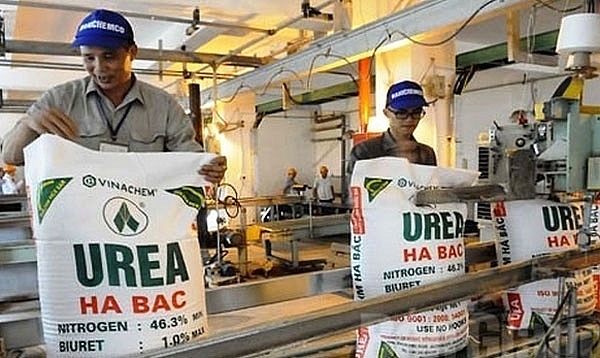Ha Bac Fertiliser reports accumulated loss of $108.4 million
 |
| Ha Bac Fertiliser reports accumulated loss of $108.4 million |
Ha Bac Fertiliser has released its financial statement of the second quarter of this year. In the second quarter alone, the firm acquired VND843.3 billion ($37.3 million) in net revenue in terms of sale and service supplying and VND160 billion ($7.07 million) in gross profit, signifying an increase of 23.4 per cent in net revenue and 35 per cent in gross profit on-year. Its financial revenue reached VND5.3 billion ($234,513).
In spite of seeing increased business results, the soar in financial and other expenditures meant the firm reported a net loss of VND83.3 billion ($3.86 million) in the second quarter of the year. Notably, the firm reported doubled sales expenditure and an increase of 39.4 per cent in managing expenditure. Financial expenditure reached VND207.7 billion ($9.19 million), VND184.3 billion ($7.99 million) of which went on paying interest.
As the result, after two quarters this year, Ha Bac Fertiliser reported a net loss of VND170 billion ($7.52 million). The accumulated loss as of the end of the second quarter reached VND2.5 trillion ($108.47 million).
Due to the bleak financial results, the company was ignored by investors when it listed on the UpCoM trading platform in late July 2017.
Notably, on July 26, Ha Bac Fertiliser had 272.2 million shares officially available for trading at the initial reference unit price of VND6,800, representing a registered capital of VND2.71 trillion ($119.2 million). At present, the share value is VND1,400.
A subsidiary of state-run Vietnam National Chemical Group (Vinachem), Ha Bac Fertiliser specialises in manufacturing urea nitrogenous fertiliser, which makes up 80 per cent of its revenue.
However, in recent years, the domestic demand for urea fertiliser fell far short of supply, leading to an extreme imbalance. The domestic fertiliser manufacturing sector has to compete with imported products, especially cheaper Chinese ones.
What the stars mean:
★ Poor ★ ★ Promising ★★★ Good ★★★★ Very good ★★★★★ Exceptional
 Tag:
Tag:
Related Contents
Latest News
More News
- Tungsten surges to 12-year high as world enters a new 'black gold' race (December 18, 2025 | 17:27)
- Vietnam’s coffee exports set new record despite price pressures (December 18, 2025 | 17:13)
- Garment and textile sector seeks new growth after volatile year (December 18, 2025 | 17:01)
- VinSpeed and Siemens strengthen cooperation for high-speed rail development (December 18, 2025 | 16:53)
- High-tech adoption for TH true MILK (December 18, 2025 | 13:39)
- Takeda supports health resilience amid climate change challenges (December 18, 2025 | 12:39)
- Mondelez Kinh Do - a chapter of purpose-led leadership in Vietnam (December 18, 2025 | 09:44)
- VNPAY services receive the highest-level PCI DSS international security certificates for six consecutive years (December 17, 2025 | 23:47)
- PPL extends its reach into ASEAN (December 17, 2025 | 15:44)
- Over 600 BUV graduates meeting quality benchmarks across triple quality assurance levels (December 17, 2025 | 13:00)






















 Mobile Version
Mobile Version